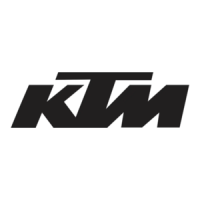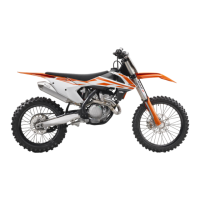What to do if my KTM Motorcycle engine does not turn when the start button is pressed?
- EEmily GonzalezAug 3, 2025
If your KTM Motorcycle engine doesn't turn over when you press the start button, there could be several reasons. It could be due to an operating error, so make sure you are following the correct start procedure. The 12V battery might be discharged, so you should charge it, check the charging voltage, open-circuit current, and the alternator's stator winding. Also, the main fuse could be blown, in which case you should change it. Finally, the starter relay or the starter motor itself could be defective, so these should be checked.



